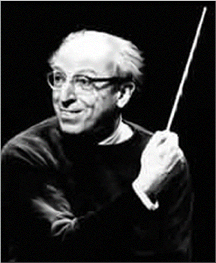
Robert Rauschenberg was born on October 22, 1925 in Port Arthur, Texas. He briefly studied pharmacology in Austin, but was drafted into the United States Navy, where he served as a neuropsychiatric technician. After his military service, Rauschenbergbegan his study of art in 1947 at the Kansas City Institute of Art. In 1948, He traveled to Paris, France to continue his studies at the Académie Julian. During the following autumn, Rauschenberg came back to the United States to study art under Josef Albers at Black Mountain College in North Carolina. It was here that he was offered his first exhibition of small monochromatic white and black paintings.
From 1952-1953, Rauschenberg began experimenting with art made of found objects, which he exhibited in Rome and Florence. In late 1953, Rauschenberg returned to New York City, where he again began to create art out of found objects on the streets, etc. In 1954, he began working on his most famous works—the Combines.The Combines melded non-traditional objects and materials with more traditional painting. These collages represent some of Rauschenberg’s most well known work. In 1962, Rauschenberg experimented with silkscreen paintings before establishing s permanent studio residence in Captiva, Florida. After traveling all over the nation exhibiting his work and receiving the National Medal of Arts in 1993, Robert Rauschenberg died on May 12, 2008, leaving behind a legacy of challenging the meaning of art.
 I chose to base my final creative project on Rauschenberg’s “Estate.” “Estate” is representative of one of Rauschenberg’s Combines—a mixture of found objects and collages. “Estate” shows the business and chaos of city life, while maintaining the fluidity and organic-like qualities of a city. It is a representative work of Neo-Dadaism or Pop Art and juxtaposes many characteristic components of a modern city existence in America.
I chose to base my final creative project on Rauschenberg’s “Estate.” “Estate” is representative of one of Rauschenberg’s Combines—a mixture of found objects and collages. “Estate” shows the business and chaos of city life, while maintaining the fluidity and organic-like qualities of a city. It is a representative work of Neo-Dadaism or Pop Art and juxtaposes many characteristic components of a modern city existence in America.
Rauschenberg’s implementation of found objects and manipulation of everyday cityscapes has greatly challenged and changed the perspective of art. Along with Duschamp and others in his artistic genre, Rauschenberg showed that non-traditional paintings and sculptures also qualify as great works of art. For some, Rauschenberg’s Combines continue to be a testament to an organic and ever-changing art genre; however, to others, Rauschenberg’s is simply another silly, incomprehensible “modern” artist.
I personally really enjoy Rauschenberg’s Combines. I likethe way each component sayssomething different, while at the same time contributing to the greater whole. I also find his incorporation of found objects to be fascinating. To me Rauschenberg’s display of everyday items casts them in a new light and causes me to think in a different way.

Making a work of art inspired by “Estate” taught me something about Rauschenberg. Having not made a collage since I was in 7th grade, I had forgotten how much time it takes to make a collage that is aestheticallypleasing and interesting. Through making my collage, I gained a greater appreciation for Rauschenberg’s Combines. Not just anyone can make what he made. It takes someone with a little more vision than scissors and a glue stick. I really enjoyed making my piece, “From the Crossroads of the West…”. Although I felt that I was able to combine a lot of aspects of BYU college life into a greater whole, I definitely realized that art is a science—one that I do not know quite as well as physics!







